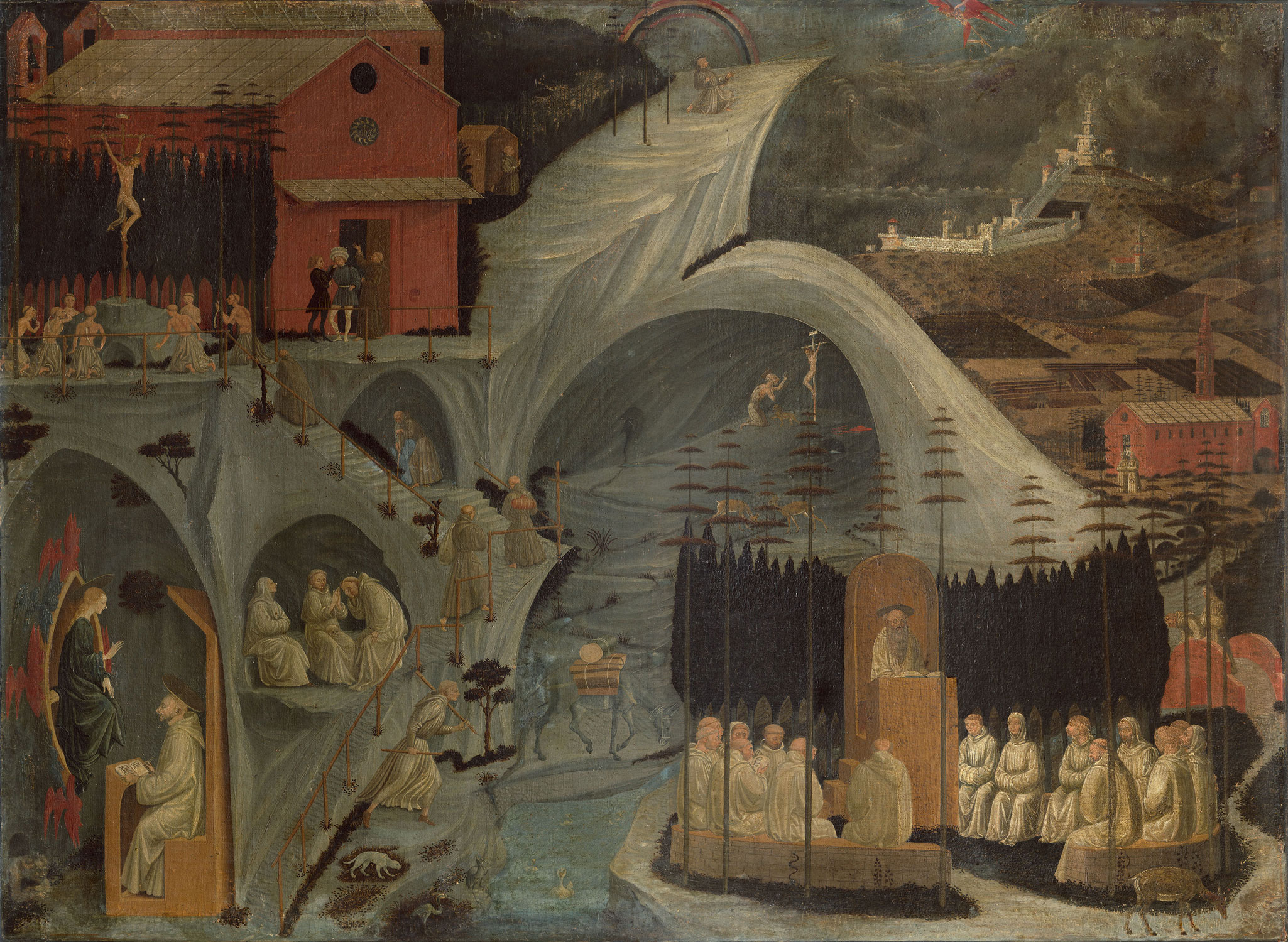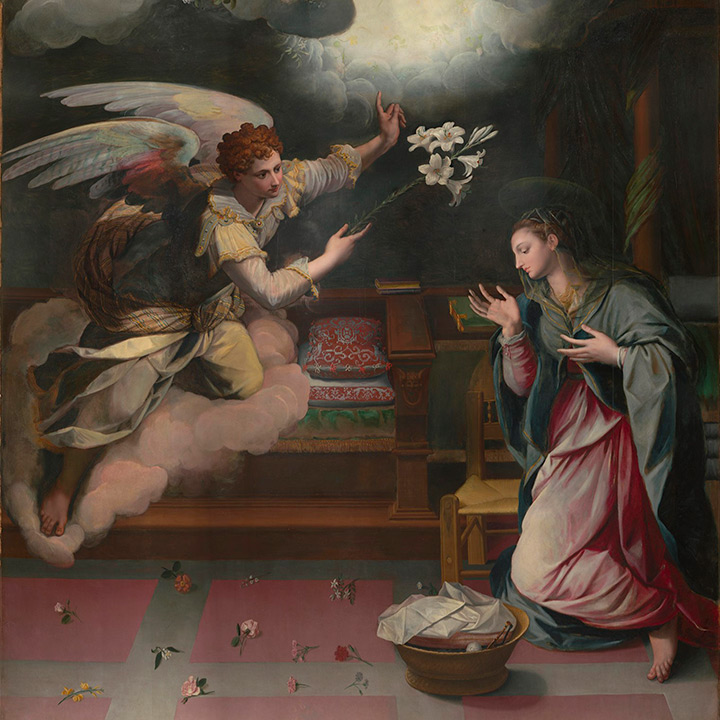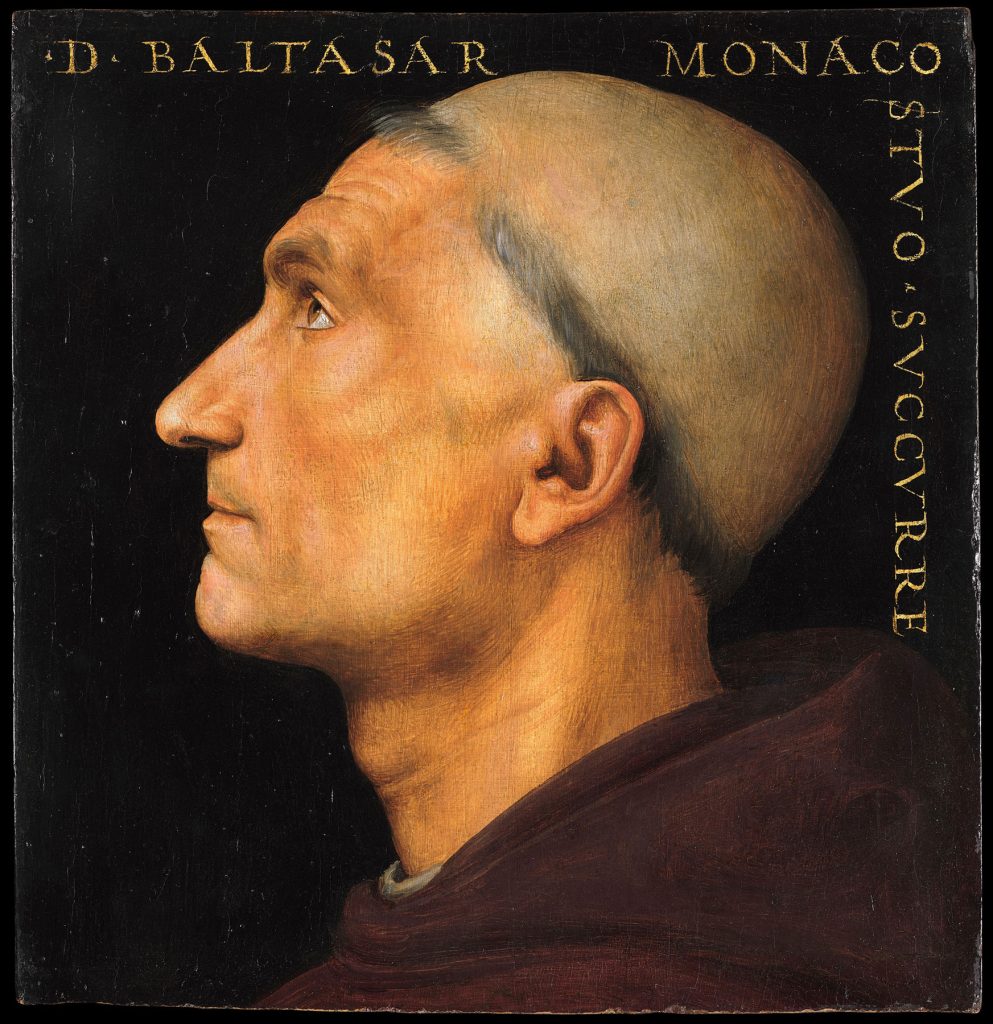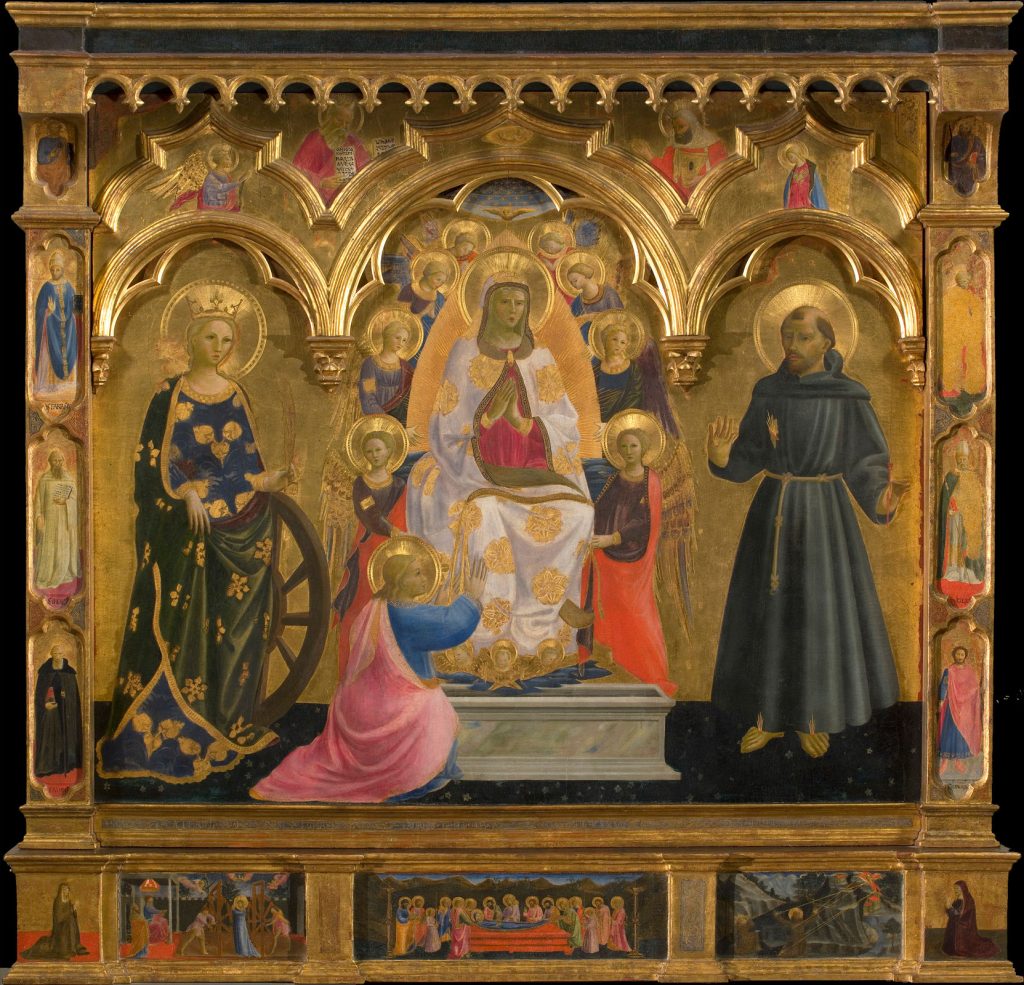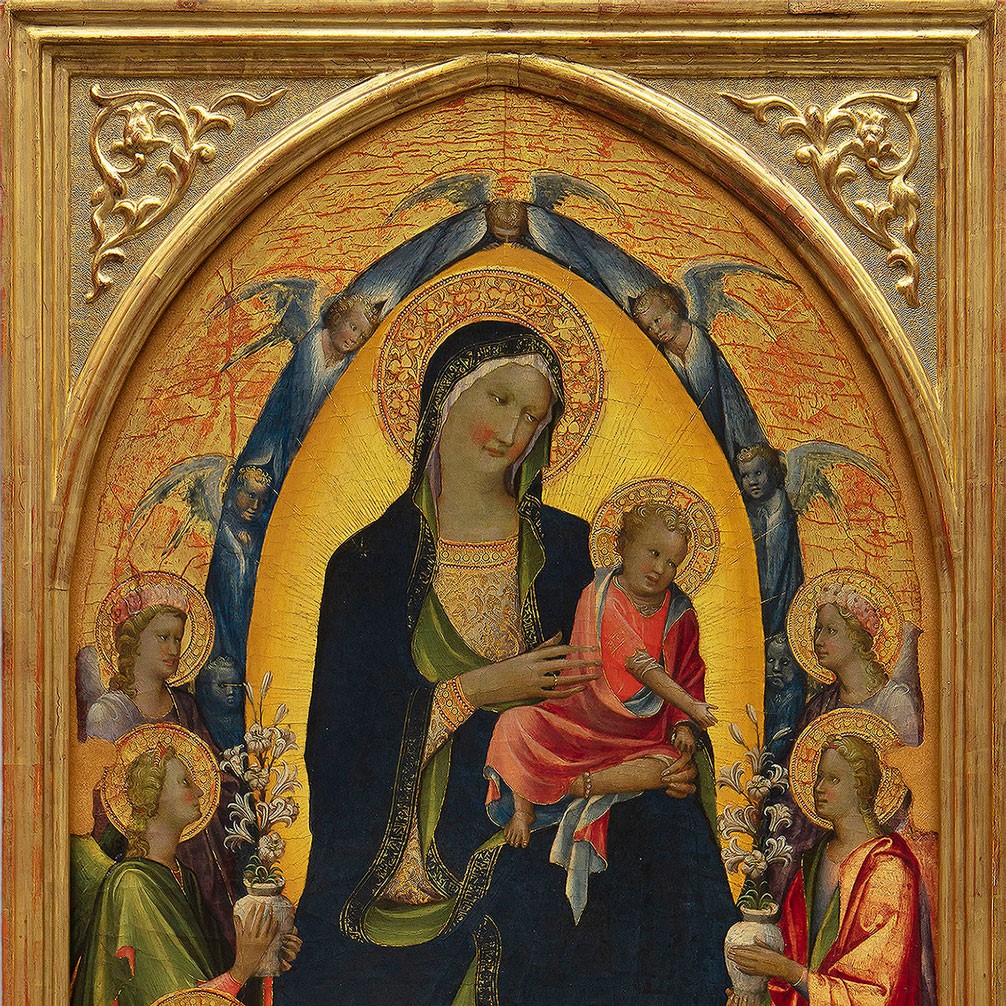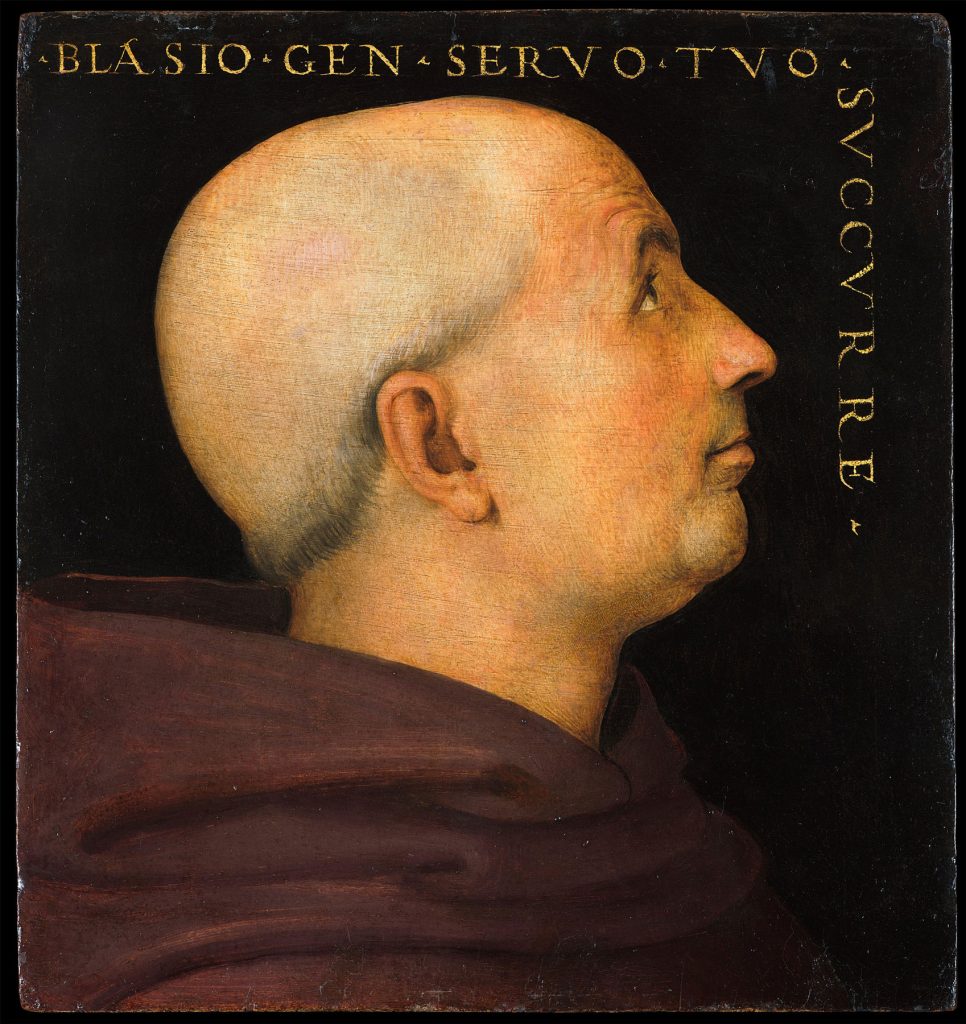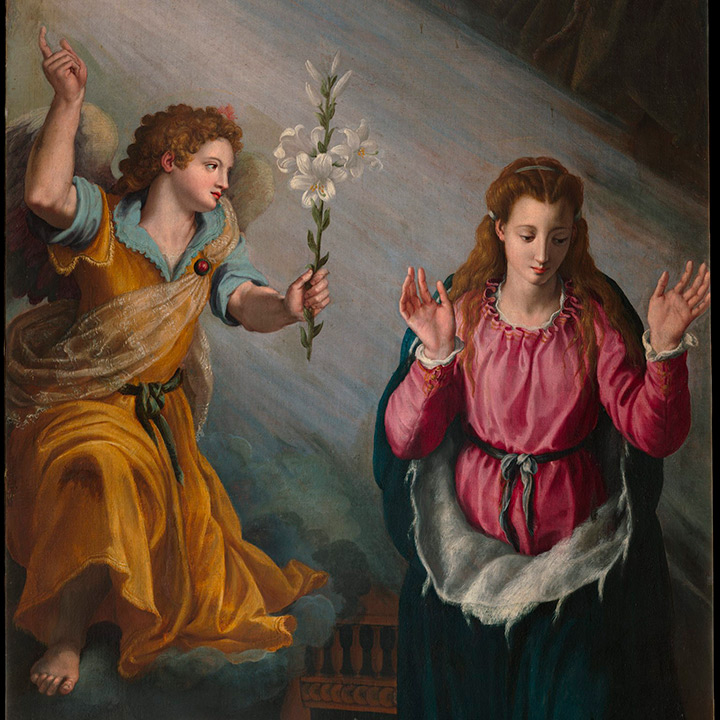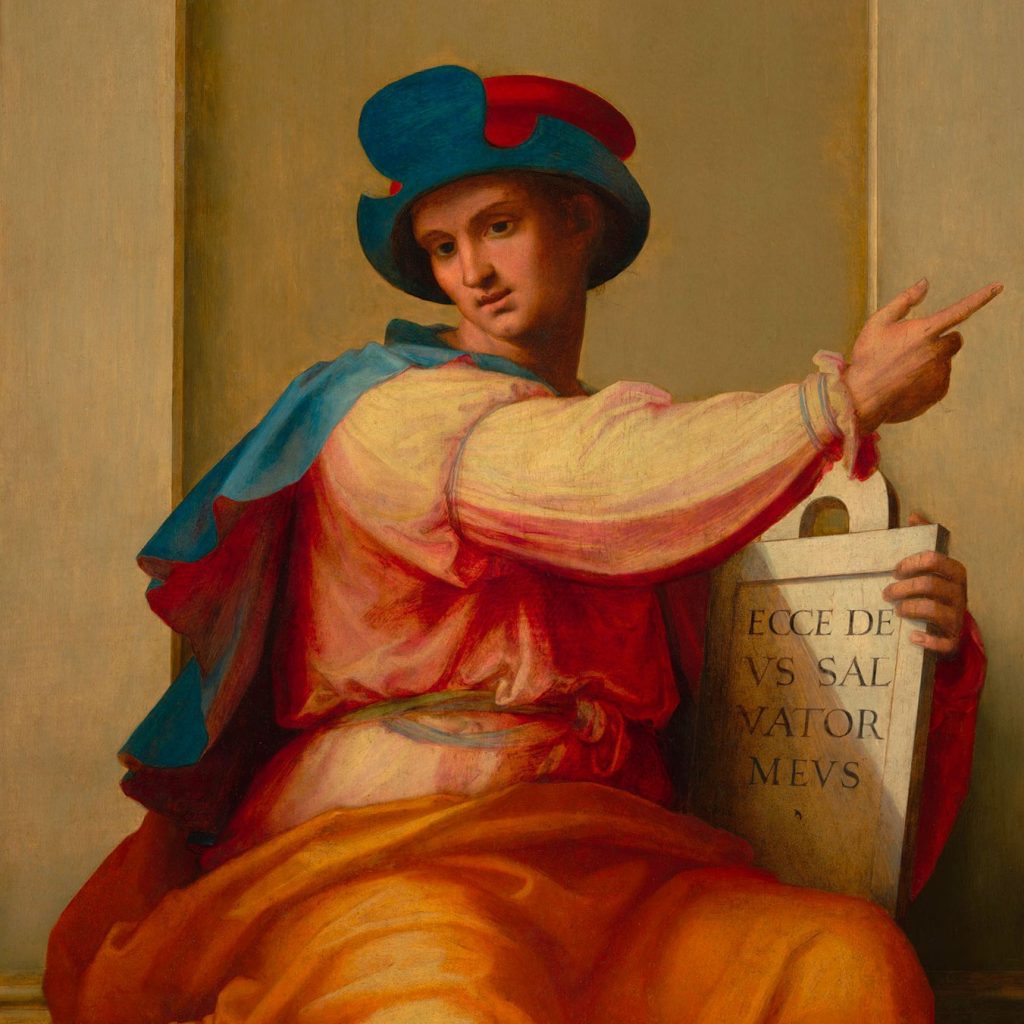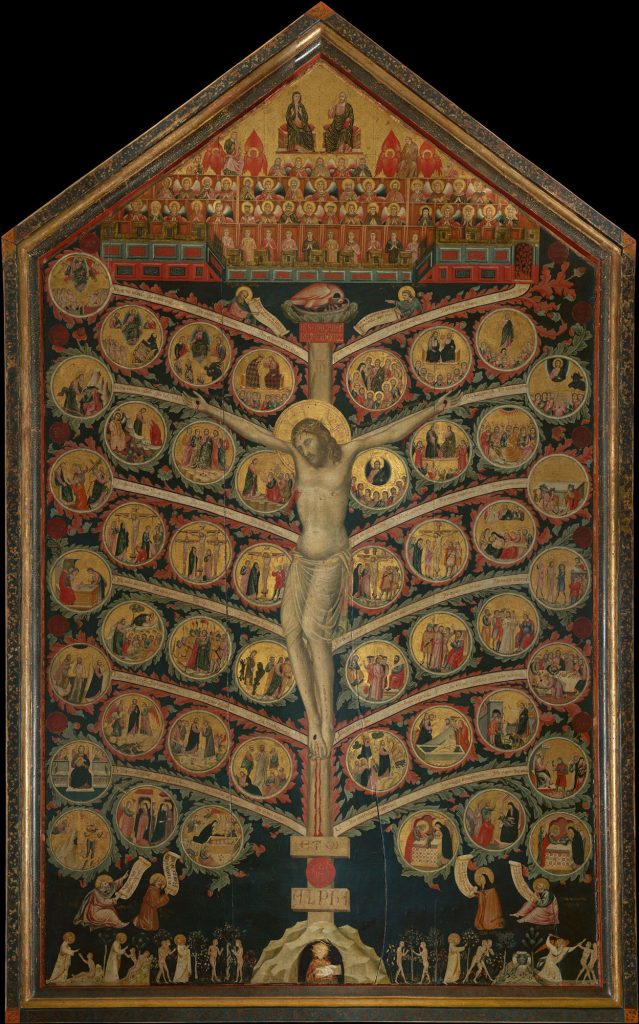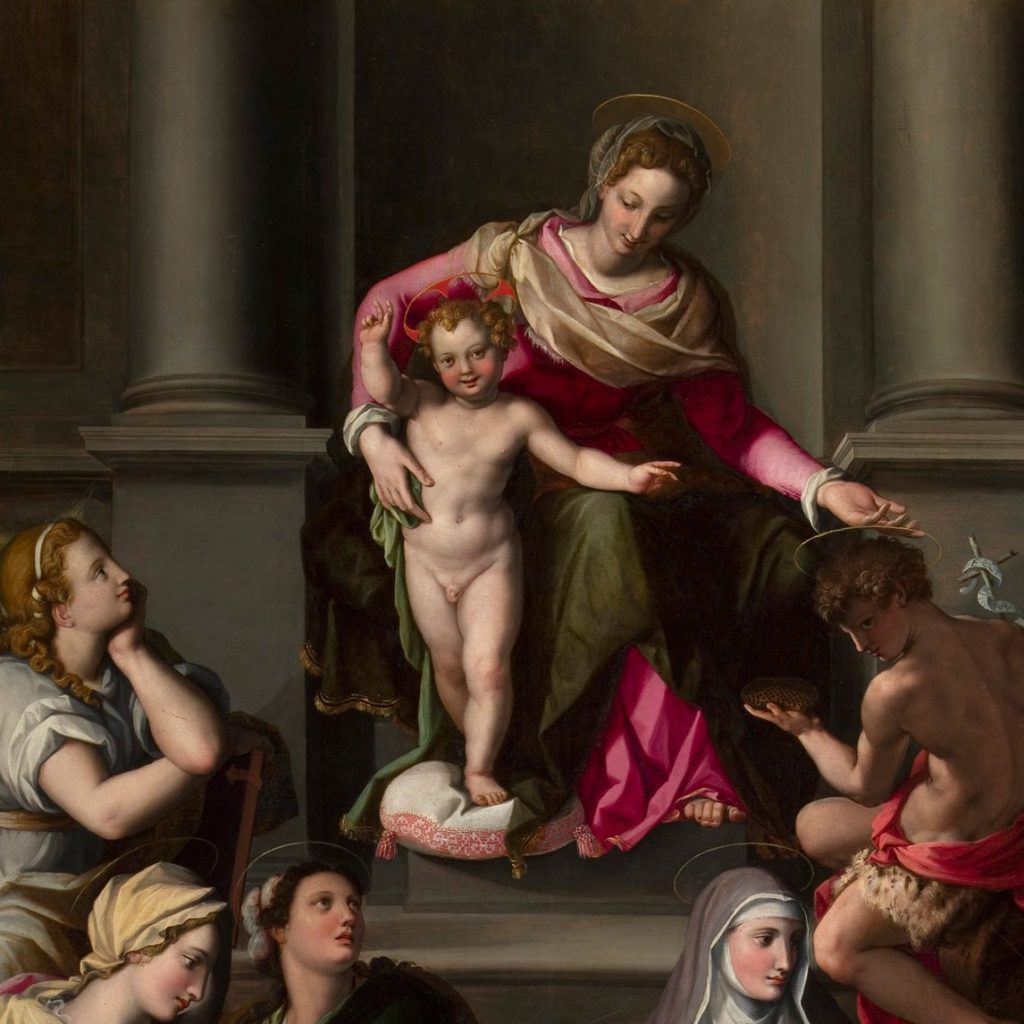Allegory of Monastic Life
Paolo Uccello
Paolo di Dono (Florence, 1397 – 1475), known as
PAINTING
Data sheet
- Author: Paolo Uccello
- Date: 1460 – 1465 c.
- Collection: PAINTING
- Technique: Tempera painting
- Dimensions: 96 x 126 cm (with frame)
- Inventory: Inv. 1890 n. 5381
Artwork
In a rugged, rocky landscape, populated by monks engaged in various activities, we recognise some typical episodes of ascetic life: on the left in the foreground, the Virgin appears to Saint Bernard; on the other side, a holy monk (Benedict or Romuald) is sitting on a pulpit reading a text to his listening brethren; in the cave at the centre, Saint Jerome penitent can be seen; immediately above, on the rocky spur, Saint Francis receives the stigmata. Although it has traditionally been interpreted as a Thebaid – a depiction of the anchorite saints who retreated to live in the Egyptian desert around the city of Thebes during the first centuries of Christianity – the theme of the painting would seem instead to be a celebration of monastic life in general, including that conducted by the most widespread religious orders in the modern age. It is therefore possible that the unknown patron wanted to update the iconography of the Thebaid by adding scenes and saints more familiar to him.
The painting comes from the Vallombrosian Monastery of San Giorgio alla Costa in Florence and may have been intended for the confraternity of the Buca di San Girolamo, whose members gathered in some rooms of the monastery for the nocturnal practice of penance, or for the nearby monastery of Franciscan tertiaries named after Saints Jerome and Francis.
This is a work of Paolo Uccello’s maturity, one of the leading figures in the early Florentine Renaissance, an original interpreter of Brunelleschi’s perspective, which he employed in an excessive and strange way. Against the backdrop of the desert, the inclusion of certain perspective details, such as the perfectly circular clearings of trees, make the atmosphere of the landscape surreal and disturbing.
